How to grow Celery: Properties of celery, planting and others
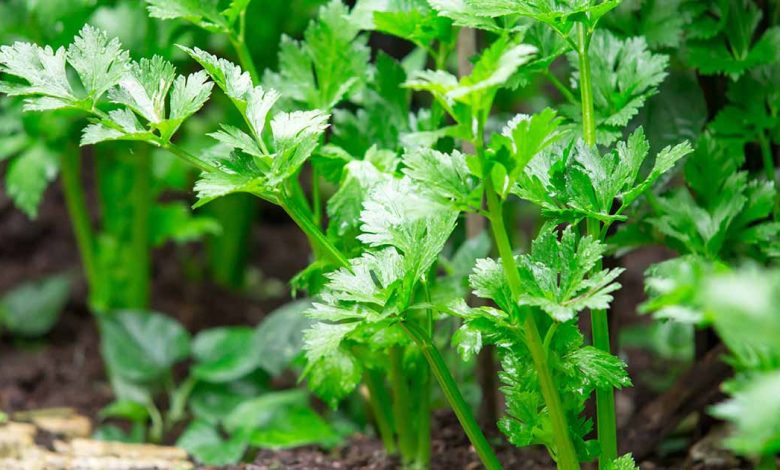
In this article we are going to explain how to grow celery in the garden. To do this, the first thing is to know the plant well: its needs for irrigation and sun, the properties of celery and the best plants in the garden with which we can grow celery (beneficial associations).
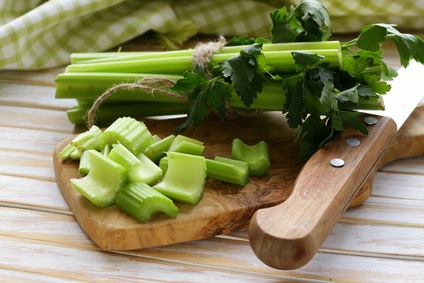
After seeing the characteristics of this crop, we will focus on how to grow celery in the garden: what care the plant needs and how to harvest it.
Celery cultivation
Celery belongs to the Umbelliferae family, like parsley, fennel or dill. It has a tap root and deep, with superficial secondary roots, that is why it is well associated with crops such as lettuce or radishes, with superficial rooting.
Stems sprout from the root neck of celery, reaching 30 to 80 cm in height. These petioles or stalks of celery are very thick and fleshy stalks and it is the part of the celery that is consumed.
Good temperature to grow celery
It is a temperate climate crop that does not withstand the cold of winter in inland areas (except those winter varieties adapted to the cold). If there is a sharp drop in temperature for a few days, this can lead to the plant flowering early. This problem is lessened when the soil is mulched with plastic sheeting or another type of mulch.
Temperatures depend on the stage of crop development:
- Seedling phase: 16-20ºC. To avoid premature flower induction, the temperature cannot drop below 13 ºC in any way.
- Orchard phase: during the first third of the crop, the ideal temperature is around 16-20ºC. Later the culture can be accommodated at lower temperatures, but always higher than 8-10ºC. Frequent lower minimum temperatures produce brittle stems.
Celery is not a lover of excessive sun and tolerates shaded places very well, although it is important that it also has a few hours of direct sunlight to develop perfectly.
What type of soil or substrate does celery need?
Celery requires deep soil, since the roots reach a great vertical length. The pH of the soil must be close to neutral and the salinity low (both in the soil and in the irrigation water).
It is a demanding crop in nutrients that can deplete the soil, so it is convenient to use the crop rotation technique and change the place of celery each season, putting in its place less demanding crops or with soil enrichers, such as legumes.
Crop associations, celery properties and benefits
Lettuces and radishes combine perfectly with celery plants, providing mutual benefits. Alternating lettuce-celery or radish-celery plants in a bed or in a section of the garden is a way of incorporating the technique of intercropping into the organic garden.
Other possible associations of crops with celery are: chard, eggplant, spinach cabbage, bean, cucumber, leek, pepper or tomato.
Harmful associations: corn, potato and carrot.
The properties of celery and its uses are very varied. In addition to being used in the kitchen as a fresh ingredient in salads or cooked in broths and creams, it has been used as a natural medicine since ancient times.
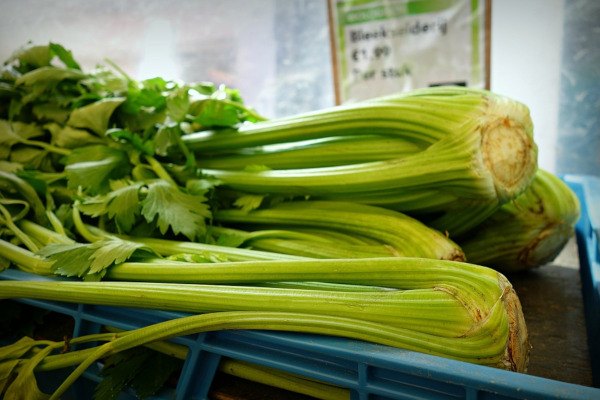
The benefits of celery derive from its antibacterial and blood-purifying properties. In addition, it is very rich in nutrients and is considered one of the best diuretics that exist due to its high amount of water, vitamins, minerals and bioflavonoids. Knowing all this… I’ve been wanting to cultivate it!
There are many varieties of celery: green, yellow, white… There are varieties that need specific care such as hilling (for whitening the stems) and other self-blanching varieties that do not need hilling.
How to grow celery in the garden
Land preparation and planting
The preparation of the soil at the time of sowing is important in the cultivation of celery, since it needs a deep soil, so we must make sure that there are no compacted layers that hinder the development of the roots.
It is convenient to make large furrows and ridges for planting or transplanting.
There are two sowing times depending on whether we are going to grow spring-summer varieties or winter varieties of celery:
- Winter: seedlings at the beginning of July-end of August and transplants from the end of August to the end of October.
- Spring: requires sowing in a nursery during the first weeks of November, due to low temperatures, with transplants taking place during the months of January and February.
Transplantation to the final field should be done when the plant reaches approximately 15 cm in height and has developed 3 or 4 true leaves and the distance between celery plants in the orchard will be 25-30 cm.
Celery care: blanching
There are green varieties of celery that need to whiten the stalk or stem. This is achieved thanks to the celery rooting.
The hilling consists of covering, generally with earth, the leaves so that the chlorophyll of the stems is degraded and they do not turn green.
Another way to blanch celery is to tie the stalks with string and cover them with a bag.
The time to do it is when the crop is in full development, since with this operation the length of the leaves is increased and their development is not harmed.
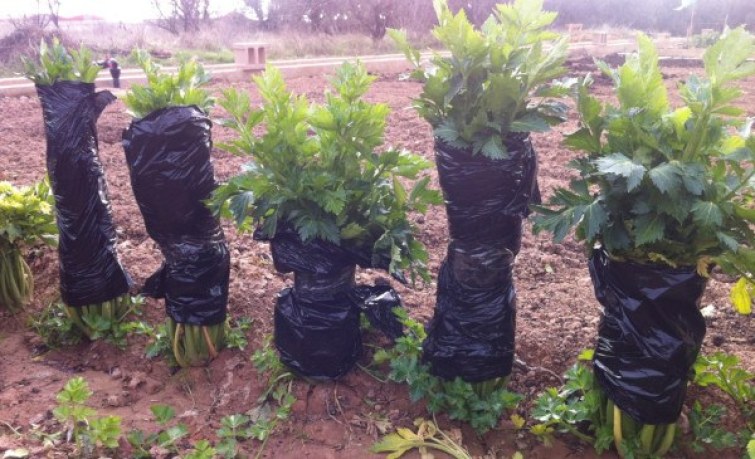
watering celery
Celery is one of the plants in the garden with the highest irrigation needs, since it needs constant moisture in the soil.
When it is in its first phases of its development, watering must be abundant and regular. You have to water again before the soil dries out, maintaining moderate and constant humidity but without flooding the soil at any time.
The irrigations must ensure that the soil is in «tempero», that is, neither too wet nor too dry, since it does not tolerate excessive humidity.
Another aspect to take into account is that the water must be of good quality, that is, not saline, since celery tolerates the presence of large amounts of dissolved salts very poorly.
the subscriber
It is very important that the soil is well fertilized since the nutrient requirement of this crop is quite high.
It is convenient that the soil is fertilized with manure. If this fertilizer is not available, it is necessary to use other complete and slow-release fertilizers, such as garden compost, since in the last month of cultivation, before harvesting, nitrogen must still be available in sufficient quantity in the soil. soil for the celery to finish developing. Check here the different types of organic fertilizer.
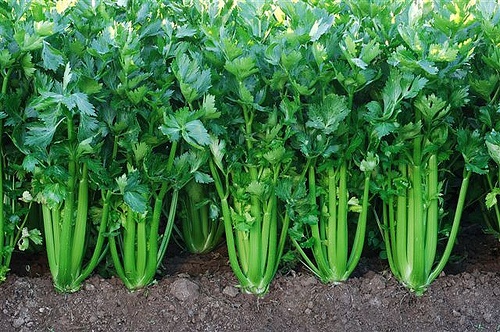
When and how to harvest celery
Harvesting is the final phase in growing celery.
It will be done around 7-8 months from the germination of the seeds, about 4 months from the transplant. It is important to harvest celery during the coolest hours of the day and place it in shaded and ventilated places.
Exposure to the sun should be avoided: one of the main characteristics associated with the quality of celery is its crispness, and this is the first thing that is lost when dehydrated.
You already have the keys to growing celery in the urban garden, will you be able to give up its exquisite touch in your broths?
Until next time!

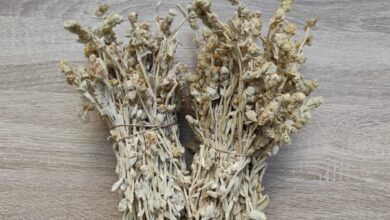
![Photo of Prune Gardenias: [Importance, Season, Tools, Considerations and Steps]](https://www.complete-gardening.com/wp-content/uploads/2022/08/prune-gardenias-importance-season-tools-considerations-and-steps-390x220.jpg)
![Photo of Ammonium Sulfate: [Concept, Operation and Application]](https://www.complete-gardening.com/wp-content/uploads/2022/08/ammonium-sulfate-concept-operation-and-application-390x220.jpg)